Tips for talking about drawing with children
Published on: 12 July 2017 Author: Sarah McIntyre
The immensely talented and down right wonderful illustrator Sarah McIntyre, who's work includes Jampires and There's a Shark in the Park, became our fifteenth Writer in Residence back in 2017. In this blog Sarah talks about encouraging children's creativity and imagination.
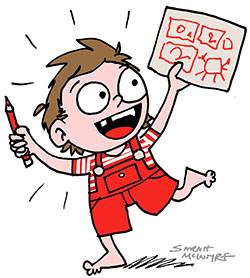
Imagine you've poured your heart into writing - say, a poem - and you present it to a friend. You're desperate to know what they think about it, nervous they won't like it, hoping they'll love it, that it might even speak to them. They pick it up, their eyes glaze over, and less than a second later they hand it back with a bland smile, saying, 'That's nice, dear'. You can see they haven't even read it. How would you feel?
This is the experience of so many children when presenting their drawings and comics to grown-ups.
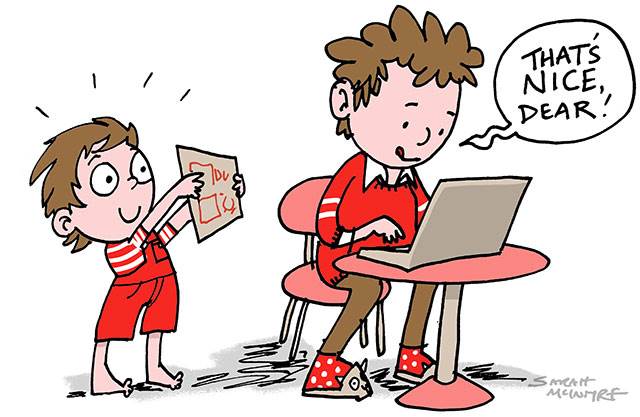
I remember it well, that feeling of being utterly patronised. Of course, grown-ups are busy, and some children will make hundreds of drawings in a day, many of them consisting of only a few swipes of the crayon, It might not be easy to engage with a child about every single picture. But whenever you as a grown-up can take the time to look - really look - at children's drawings and discuss their drawings with them, it's a wonderful way to validate what they've made and who they are as creative people.
Some grown-ups might feel nervous about talking about drawings. They feel they don't know enough to be able to say anything. But here are some helpful guidelines, some of which I adapted from a talk by novelist Emma Newman.
1. Ask questions
If the subject of the drawing is unclear, it's OK to ask questions and let the child tell you about what's in the picture. It might be good to find something in the image that stands out and start with a positive comment: 'I like this bright patch of red. What is it you've drawn here?'
2. Talk about story
Children very often have a narrative going on in their pictures or comic strips. But young children aren't usually very good at making the story clear to the reader or understanding how one thing in a story thing logically progresses to the next. Try to draw out the story that's in their heads by asking questions, even if you can't see it on the paper. While you're probing for the story, just try to understand it - don't try to criticise it unless they ask for your help.
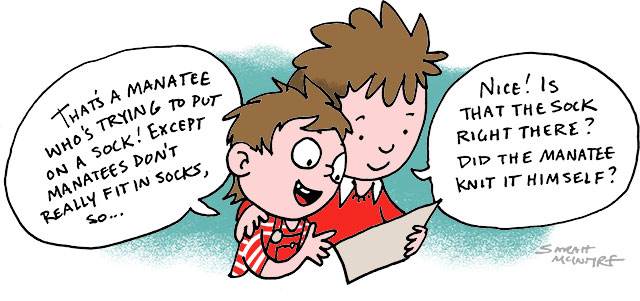
3. Comment on their technique
Pick out your favourite bits: 'I like the way you've used a rough texture here to make the dragon's scales.' 'You've drawn the lines much darker this time and added pattern. I love the way that makes the unicorn stand out against the sky.'
4. Spelling and grammar can wait
Don't worry about fixing their spelling or grammar unless they specifically ask for help with it. I've had parents tell me their kids will get PLENTY of this in school, to the point of killing their creativity altogether, so focus instead on the story or the idea.
5. Give fun, gentle pushes to the quick-scribbler
If a child always draws very quickly - only two or three dashed strokes - before abandoning the picture, try to get them to think a bit more about what they've drawn: 'What is it you've drawn here? I can see the line, but how could you make it more clear so I can understand what it is? Do you think it could use some eyes?'
Now that the child has your attention, they may be glad to add more to the drawing as a sort of back-and-forth game with you, to keep you focused on them. 'Now I can see the caterpillar. Do you think it might need a leaf or some grass to live in?' This ongoing one-on-one attention to visual details takes time, and teachers at school may not make time to do it regularly with each student, tending to focus on their writing.
6. Give hugs to the perfectionist
Some kids will tear themselves to pieces if they can't get a drawing exactly right as they see it. It's hard to watch a kid keep screwing up their paper into a ball. There's no easy answer to this, other than to try drawing with the kid yourself, so they can see you accepting your own mistakes and being able to laugh at your own failings.
Try making your own very silly drawings, say, of a five-legged unicorn or flopsy camel. Then jokingly befriend it, and show you have affection for it despite its failings. I'm not saying this will work, but it may help show your kid that it's OK for a picture not to be photographically accurate and that fun foibles have their place, too.
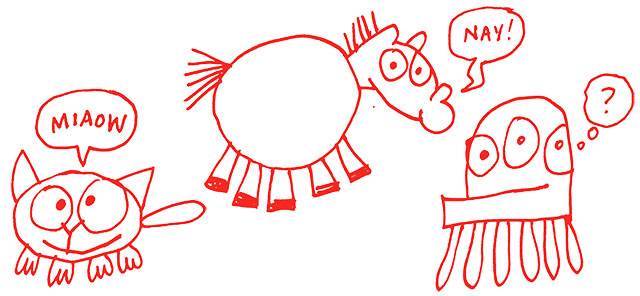
7. Think about your kid's art supplies
If the child is struggling to achieve something with their drawing and you can see it's down to faulty art supplies, try to provide something that might work better without telling them they "must" use it. For example, if they're trying to draw with a yellow pen and it's not very visible on white paper, try to dig up some pens that would show up better. Or if the crayons are too waxy and fat and they're getting frustrated because they can't use them to add the details they'd like, possibly provide them with some coloured pencils and a sharpener. If the watercolour isn't absorbing into the photocopy paper, try to get them some thicker paper that will absorb.
Obviously you need to stay within your budget, but if you keep an eye out for art supplies when you're shopping, you might stumble on some good deals. Art supplies are also a good suggestion if a friend or relative wants to know what to give your child as a gift: 'Hannah would love a pad of watercolour paper and brushes and Jack would like some coloured craft paper and better scissors.'
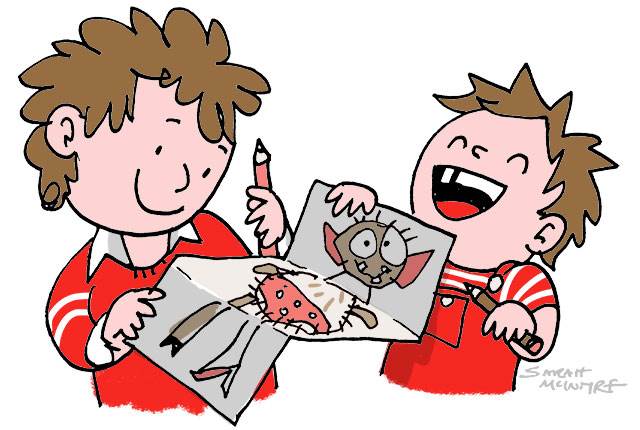
8. Let your kids inspire you!
Grown-ups love to be told they've inspired someone, and kids are the same. Get excited about something they've drawn and from time to time, try to make your own drawing or comic, too, whatever your skill level. Possibly do something jointly, such as a game of Picture Consequences, a Comic Jam or a 20-minute book. Drawing together is a wonderfully companionable activity and helps a kid feel loved and appreciated.
Topics: 2-3 years, 4-5 years, 6-8 years, 9-11 years, Writer in Residence, Librarian, Parent/carer, Teacher (primary), KS1, KS2, Primary, Features





